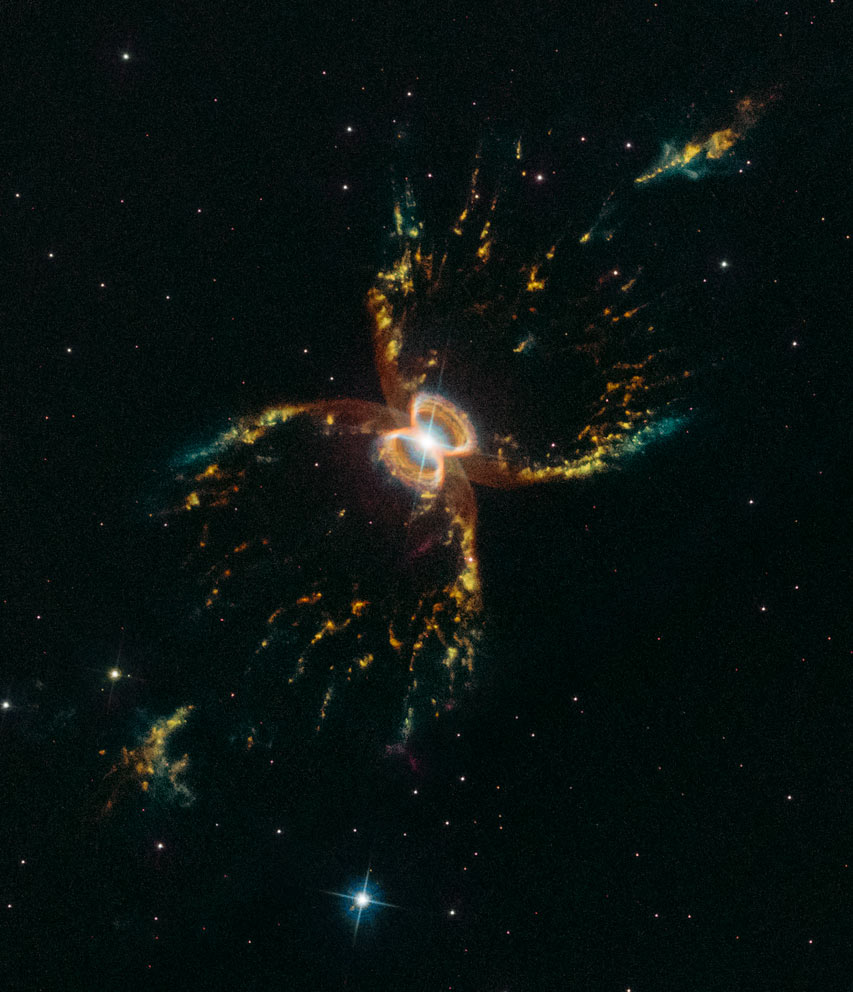About
About WFC3

The Wide Field Camera 3 (WFC3) is a fourth-generation UVIS/IR imager aboard the Hubble Space Telescope (HST). WFC3 was installed in May 2009 during HST servicing mission 4, and replaces the Wide Field Planetary Camera 2 (WFPC2).
WFC3 is designed to ensure that HST maintains its powerful imaging capabilities until the end of its mission, while at the same time advancing its survey and discovery capability through WFC3’s combination of broad wavelength coverage, wide field of view, and high sensitivity. A key feature of WFC3 is its panchromatic wavelength coverage. By combining two optical/ultraviolet CCDs with a near-infrared HgCdTe array, WFC3 is capable of direct, high-resolution imaging over the entire wavelength range from 200 to 1700 nm. Equipped with a comprehensive range of wide-, intermediate-, and narrow-band filters, WFC3 has broad applicability to a variety of new astrophysical investigations.
WFC3 is a facility instrument. It was developed, constructed, characterized, and calibrated by an Integrated Product Team (IPT) led by NASA’s Goddard Space Flight Center (GSFC), and composed of staff astronomers and engineers from GSFC, STScI, Ball Aerospace & Technologies Corp., the Jet Propulsion Laboratory (JPL), and other industrial contractors.
Current Status
Operating nominally
NEW: Cycle 33 Instrument Handbook
HST Jupyter Notebooks & Tutorials
Data Quality Assessment Checklist (useful for Exception Reports)
Web Tools and Helpful Links
Instrument Comparison for Cycle 32
Program Information
WFC3 Instrument Resources
Recently Published Documents
ISRs
Filter Results
-
April 21, 2025M. K. Alam, F. Dauphin, A. Pagul
-
ISR 2024-16: New WFC3/IR Superdarks for HST Cycles 26-30
December 30, 2024A. Pidgeon & H. Khandrika -
ISR 2024-15: WFC3/UVIS Geometric Distortion - Time Evolution of Linear Terms w.r.t Gaia
December 30, 2024A. O'Connor, V. Bajaj, J. Mack, A. Calamida -
ISR 2024-14: Using machine learning for object classification and filtering
December 20, 2024V. Bajaj & F. Dauphin -
ISR 2024-13: New Time-Dependent WFC3/IR Inverse Sensitivities
December 18, 2024Annalisa Calamida, Mariarosa Marinelli, Varun Bajaj, Aidan Pidgeon, Jennifer Mack
STANs
Filter Results
-
WFC3 STAN Issue 48, January 2025
January 10, 2025 -
WFC3 STAN Issue 47, October 2024
October 07, 2024 -
WFC3 STAN Issue 46, June 2024
June 13, 2024 -
WFC3 STAN Issue 45, March 2024
March 06, 2024 -
WFC3 STAN Issue 44, January 2024
January 08, 2024
Gallery
Pre-footer
HST Help Desk
Please contact the HST Help Desk with any questions.






